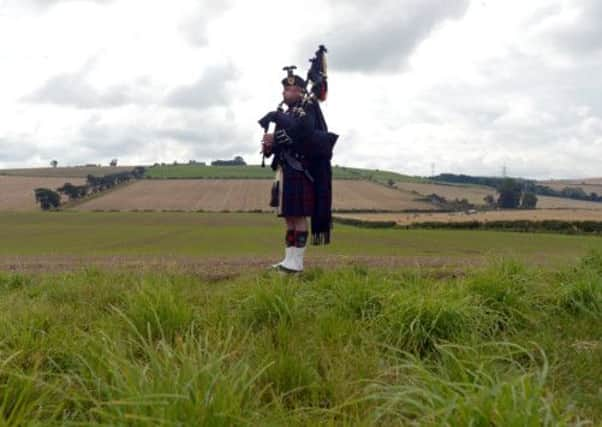Tom Devine: King’s Flodden plan led to calamity


During his lifetime he gave the nation good government, built up the royal treasury, invested in such prestigious buildings in the Renaissance style as the magnificent Great Hall at Stirling Castle, and created a Scottish navy of unprecedented size.
But James also saw himself as a warrior prince and this finally proved his undoing.
Advertisement
Hide AdAdvertisement
Hide AdAlthough he was married into the English royal house, Scotland remained a close ally of France and it was because of his loyalty to Louis XII that James marched into England in September 1513 at the head of a great host against the forces of his brother-in-law, Henry VIII, who at the time was engaged in conflict with the French.
The Scottish invasion was unnecessary, the result of James’s overvaulting ambition to prove himself a significant player in the arena of European power politics.
He may also have felt confident of victory. The Scottish army outnumbered the English, it was employing for the first time advanced (but in the event calamitous) military tactics learned from the French, and James may also have hoped to gain a decisive advantage from the absence of Henry himself who was then leading his soldiers on the battlefields of France.
Instead, the Scots endured a calamitous defeat. At least 5,000 and perhaps as many as 8,000 men were lost in a few hours of bloody combat on a single afternoon as well as the deaths of a goodly part of the political and social leadership of the country, including the Chancellor of Scotland, the Bishop of the Isles, the Dean of Glasgow Cathedral and several Lords of Parliament.
The decision by both sides not to give any quarter and the brutal nature of face-to-face combat with axe, pike and bill hook helps to account for the horrendous scale of the bloodletting.
Scottish soldiers were never to suffer losses on such a scale again until the epic battles of the Great War.
It was indeed fortunate for the Scots, however, that the victorious English did not press home their advantage by invasion, possibly because they were still fully engaged in France. If they had done so, the outcome would have been a military walkover.
Flodden was a knock-out blow for Scotland. The country lay defenceless and England might have been easily able to impose a union by conquest not unlike the occupation of Ireland in later times.
Advertisement
Hide AdAdvertisement
Hide AdIf that had occurred, the course of Scottish and British history would indeed have been profoundly altered.
As it was, Flodden had a devastating impact on Scotland in the short run.
Overnight the kingdom was transformed from a stable realm to a nation wrought once again by the internecine rivalries of competing magnate factions.
The new monarch, James V, was a one-year-old infant. So much power was vested in the persona of kingship that semi-anarchy was likely to follow the sudden death of his father, who had been a powerful head of state.
Royal authority for a time was profoundly weakened.
However, the longer-term effects of Flodden should not be exaggerated. The Stewart dynasty survived the trauma and by the 1530s a now mature James V was once again able to bring effective governance to the country.
The discontinuity caused by his father’s violent death proved to be only temporary.
In learning, literature, architecture, printing and the universities, the nation at elite level managed to recover.
James V himself, like James IV before him, soon proved to be a notable Renaissance prince.
Advertisement
Hide AdAdvertisement
Hide AdInstead of Flodden, it was the Reformation, taking place a generation after the battle, which was really the 16th century game-changer.
It set Scotland on a new path, finally bringing the Auld Alliance with France to an end and providing the foundation for a much closer relationship with Protestant England.
Then, in 1603, the historical wheel came full circle when the great-grandson of the Scottish king slain on Flodden Field became James I of the United Kingdom through the line established by the marriage of his great-grandfather with the English princess, Margaret Tudor, nearly a century before.
• Professor Tom Devine is director of the Scottish Centre of Diaspora Studies.